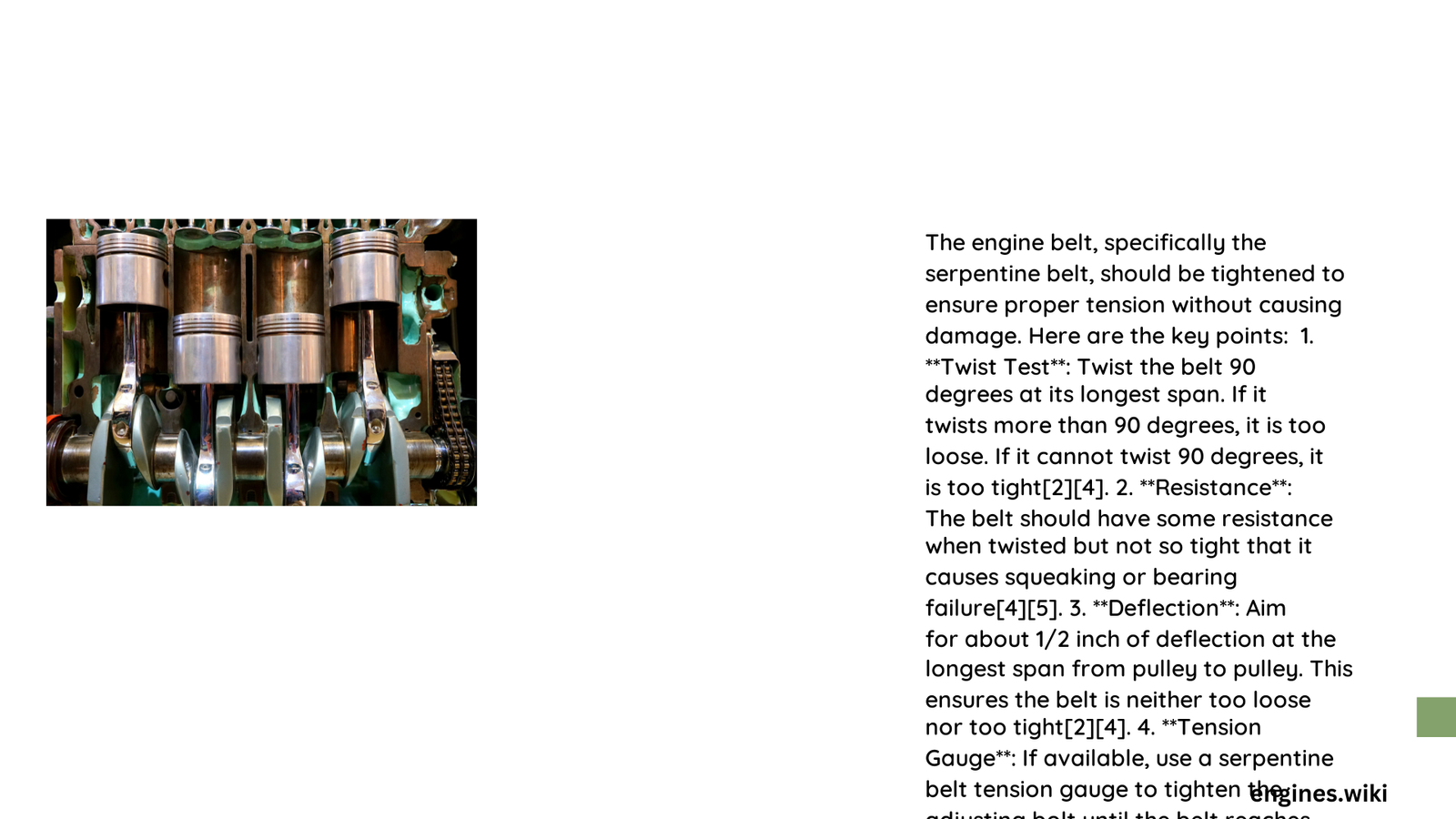Engine belt tension is a critical aspect of vehicle maintenance that directly impacts performance, efficiency, and longevity of critical automotive systems. Improper belt tension can lead to significant mechanical issues, ranging from accessory system failures to potential engine damage. Understanding the precise balance between too loose and too tight is essential for maintaining your vehicle’s optimal operational condition.
What Determines Proper Engine Belt Tension?
Why Does Belt Tension Matter?
Belt tension plays a crucial role in the smooth operation of multiple engine components. An improperly tensioned belt can cause:
- Reduced Accessory Performance
- Increased Mechanical Wear
- Potential System Failures
How to Measure Belt Tension Accurately?
Manual Deflection Method
- Locate Longest Belt Span
- Apply Moderate Pressure
- Measure Deflection
- Ideal deflection: 1/2 inch (approximately 1.3 cm)
- Less than 1/2 inch: Too loose
- More than 1/2 inch: Too tight
Professional Tension Gauge Technique
| Measurement Tool | Accuracy Level | Recommended For |
|---|---|---|
| Manual Ruler | Low | DIY Enthusiasts |
| Digital Tension Gauge | High | Professional Mechanics |
| Manufacturer-Specific Tool | Highest | Specialized Repairs |
What Are Warning Signs of Incorrect Belt Tension?

Symptoms of Loose Belt
- Squealing or chirping noises
- Visible belt slippage
- Inconsistent accessory performance
- Visible wear on belt edges
Symptoms of Overly Tight Belt
- Excessive bearing wear
- Premature belt deterioration
- Increased strain on pulleys
- Reduced overall system efficiency
How to Adjust Engine Belt Tension?
Step-by-Step Adjustment Process
- Locate Tensioner Pulley
- Loosen Mounting Bolt
- Apply Precise Tension
- Verify Tension Measurement
- Secure Mounting Bolt
Essential Tools for Belt Tension Adjustment
- Tension gauge
- Socket wrench
- Ruler or measuring tape
- Manufacturer’s specifications manual
What Factors Influence Belt Tension?
Vehicle-Specific Considerations
- Engine design
- Accessory configuration
- Manufacturer specifications
- Environmental operating conditions
Recommended Maintenance Frequency
- Initial Inspection: Every 15,000 miles
- Detailed Tension Check: Annually
- Replacement Interval: Typically 60,000-100,000 miles
Professional Recommendations
Expert Tips
- Always consult vehicle-specific manual
- Use manufacturer-recommended tools
- Consider professional inspection for complex systems
- Replace belt if significant wear is detected
Potential Consequences of Neglect
Long-Term Impact of Improper Tension
- Accelerated component wear
- Potential catastrophic system failure
- Increased repair costs
- Reduced vehicle reliability
Pro Tip: Regular inspection and precise tension maintenance can prevent costly repairs and extend your vehicle’s operational lifespan.
Conclusion
Proper engine belt tension requires a nuanced approach, combining technical knowledge, precise measurement, and consistent maintenance. By understanding the critical factors and implementing regular checks, vehicle owners can ensure optimal performance and longevity.
